In today’s rapidly evolving battlefield, small-unit tactics and the ability to operate in complex environments are critical to the success of military operations. Emerging technologies, such as unmanned platforms, loitering munitions, and AI-driven solutions, are transforming how soldiers engage with adversaries and navigate challenging terrain. This report examines the latest innovations in portable unmanned assets, providing insight into how these technologies enhance warfighters’ capabilities and address the needs of small-unit tactics.
Military operations often rely on the ability of small units and individual soldiers to execute missions autonomously. From special operations teams to infantry squads, soldiers undergo rigorous training to function cohesively, survive in the field, and sustain themselves for extended periods. They carry their personal and squad weapons with full ammunition loads, personal survival gear, observation systems, night vision and communication equipment, food, water, and medical kits. Additionally, spare batteries are necessary to power those electronic devices, collectively amounting to over 60 kg per individual and nearly half a tonne for an entire squad. Consequently, something else must be removed for every extra asset added to a soldier’s load.
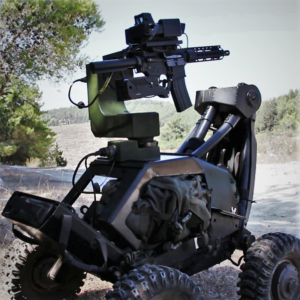
Credit: Marom-Dolphin
One potential solution to the weight challenge involves utilising a robotic load carrier to offset excess weight. However, to withstand all-terrain operations, such a carrier must be robust and heavy enough to be able to carry the load. A powered loader would be more convenient and advantageous, a niche filled by the Marom-Dolphin’s WILD GOOSE tactical hauler. This electric-powered robotic vehicle transports heavy loads over different terrain while preserving full combat effectiveness and troop mobility. Available in two or four-wheeled configurations, the two-wheeler model weighs 28 kg and has a load carrying capacity of 70 kg, while the four-wheel hauler can carry 140 kg. The hauler consists of modular units, allowing soldiers to combine two of the two-wheeler models in the field to create a four-wheeler hauler. The haulers connect to the soldier through an ergonomic and elastic goose-neck quick-release connector, ensuring hands-free movement, vehicle stability, and unhindered weapon operation.
As a four-wheel robot, the hauler can become an unmanned weapons carrier, mounting an automatic weapon carried by the squad in a small remote weapon station, and then remotely operated by a squad member. This feature allows the squad to strategically position support weapons, even in exposed locations, while operating from behind cover. The same configuration can allow for casualty evacuation by carrying a stretcher, using the soldier’s goose-neck connector for guidance. In this mode, the hauler frees up three soldiers who would otherwise be needed to transport a wounded comrade to safety.
Supporting warfighters in various roles, unmanned aerial vehicles (UAVs) offer innovative capabilities, such as the automated image-based medical sensing (AIMS) developed by the US-based company Areté. AIMS enhances battlefield or mass casualty triage by remotely locating, characterising, and monitoring casualties from the point of injury to field care. The system employs the drone’s camera, augmented by computer vision and on-board medical sensing software, to detect human casualties, assess wounds, measure respiration and other vital signs, and document patient status and changes. In 2021, Areté demonstrated this capability in a field test, achieving a TRL-6 level of readiness for this critical capability.
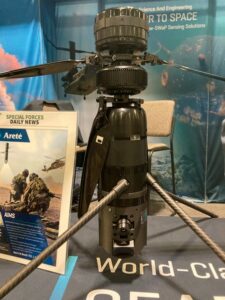
Special operations teams may consider remotely controlled weapon mounts such as Smartshooter’s SMASH HOPPER P to establish covert firing positions in ambush scenarios. This lightweight, low-profile stationary remote weapon station (RWS) can accommodate assault or sniper rifles and can be assembled by one person in the field. Equipped with pan and tilt motion control, the system benefits from the company’s fire control software developed for the SMASH range, providing target detection and tracking to enable accurate fire.
Small Loitering Munitions and their Applications
Among the robotic assets developed for the warfighter are various nano-loitering munitions. This new weapon category brings beyond line of sight (BLoS) attack capability to the individual soldier and squad level.
Defendtex, an Australian company, offers the unique D40 expendable grenade-sized munition, designed for launch from 40 mm grenade launchers, but can also be hand-launched if required. Prior to launch, the D40 is folded in a compact state, measuring 120 mm in length and 40 mm in diameter. Upon deployment, it extends its rotors into a quad-rotor configuration and takes flight, with a top speed of 20 m/s, a maximum range of 20 km, and a flight time of 30-60 minutes, depending on payload. The drone has an empty weight of 190 g and a maximum takeoff weight of 300 g. Its modular payload can be configured for kinetic, electronic attack, ISR, smoke/flash, and flash/bang effects. Capable of autonomous flight and swarming, the D40 enables a single soldier to engage multiple targets or deliver a multiple rounds, simultaneous impact (MRSI) strike, an effect previously achievable only by a modern artillery system or a battery executing a coordinated fire plan.
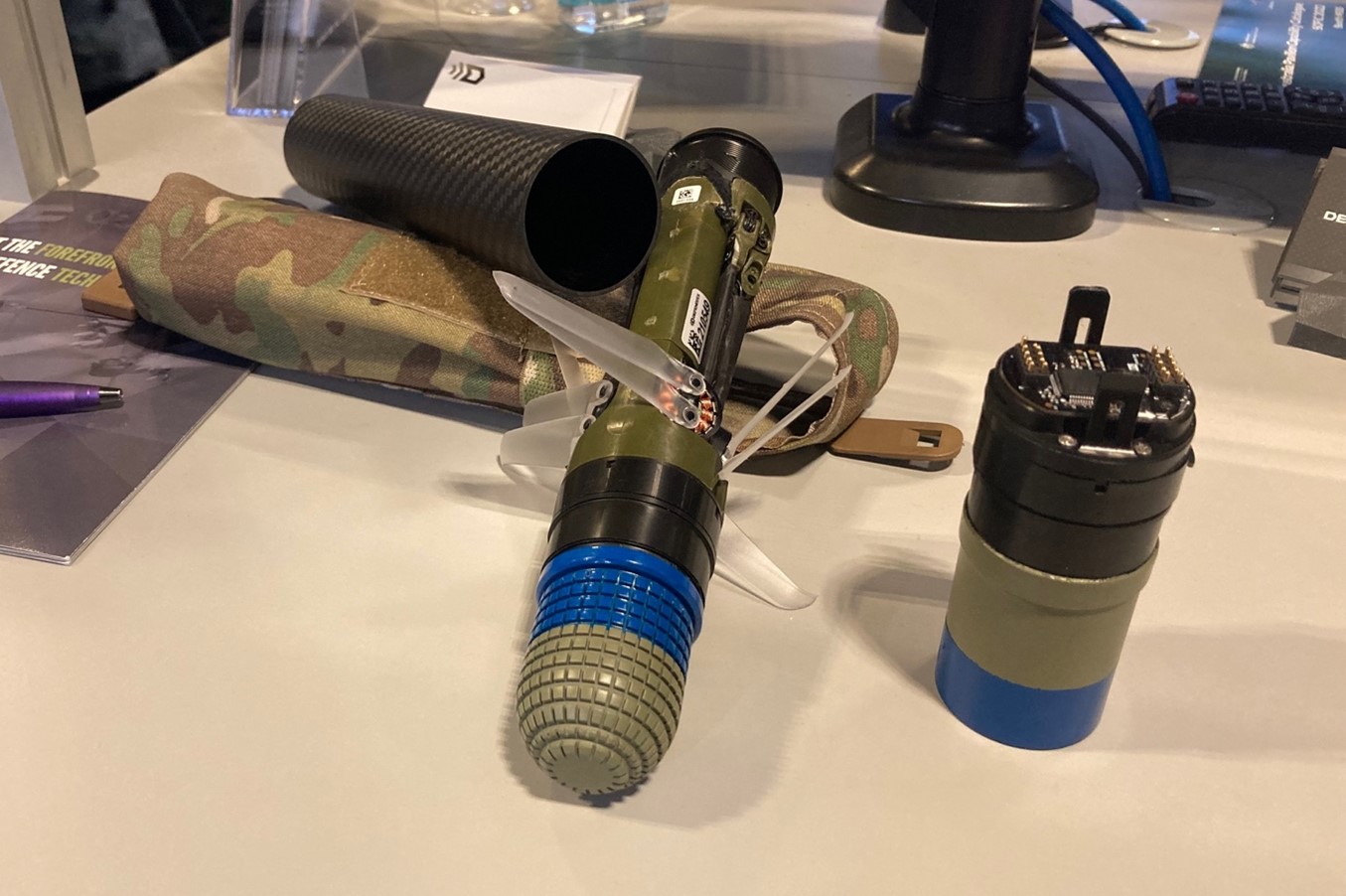
Credit: Tamir Eshel
Another loitering munition is the Spike Firefly developed by Rafael. This coaxial-rotor-powered VTOL drone utilises a bi-directional military-standard datalink and features a detachable high-explosive fragmentation (HE-FRAG) warhead. Easily assembled and launched by a single operator, the Firefly employs day and thermal optronic and proximity sensors for navigation towards its target, using either preset waypoints or being guided via camera Upon target detection, the operator can command the Firefly to strike or abort the attack at any time before impact. The weapon is disarmed if no target is engaged and can be safely retrieved for reuse. The Firefly boasts an engagement range of 500 m in dense urban terrain or 1,500 m in open areas, with a mission endurance time of 15 minutes. A complete Firefly system includes three loitering munitions, spare batteries, a control tablet, and a backpack, with a combined weight of 15 kg.
SpearUAV, another Israeli company, has developed the VIPER, a canister-launched loitering munition with autonomous hovering capability. VIPER provides organic, responsive, precision fire support at the squad level, allowing operators to neutralise immediate threats such as enemy snipers and RPG teams without dependence on higher-level assets.
Featuring a low acoustic and visual signature, day and thermal camera sensor with automatic target recognition capability, VIPER utilises AI-driven obstacle avoidance sensors for safe flight, even in challenging terrain. It can operate individually or as part of a collaborative swarm controlled by a single operator during complex missions. VIPER has an interchangeable payload bay, with current options including explosive, non-lethal, or electronic warfare payloads. In 2022, Spear partnered with Leonardo DRS to market the VIPER in the US.
Turkish company STM has developed the KARGU, to provide reconnaissance and precision strike options for ground forces. The KARGU weapon system operates through fully autonomous navigation, requiring only 60 seconds for pre-mission preparations. Upon target identification using its on-board cameras, supported by automatic target recognition software, KARGU transfers control to the operator over the secure, AES-256-bit encrypted datalink. The operator maintains full control and can then authorise the strike. KARGU weighs 7.6-7.8 kg depending on the payload, and is armed with a proximity fuzed 1.3 kg HE-FRAG warhead with 840 pre-formed 4 mm cuboid fragments. The platform has a mission endurance of 30 minutes, and can operate up to 10 km from the control station and at altitudes of 3 km, in wind conditions of 10 m/s.
In the US, Aerovironment is now offering the Switchblade 300 Block 20. This is a tube-launched loitering munition featuring a foldable wing design. The predecessor Block 10 model has seen extensive combat use in Iraq, Syria, Afghanistan, and Ukraine. The updated Block 20 model introduces a tablet-based control system, streamlining usability, planning, and training for the operator. Additionally the updated model received an improved Digital Data Link (DDL) range with AES-256 bit encryption, a new day/IR panning camera suite enabling it to be cued onto target while circling and carrying out continuous positive identification (PID).

Credit: AeroVironment
Weighing 1.77 kg, the Switchblade 300 Block 20 can be made ready and deployed by tube launch in less than two minutes, allowing it to be quickly employed. Its winged configuration allows for a dive velocity of 50 m/s, significantly faster than the terminal speed achieved by multirotor drones. It has an endurance of over 20 minutes, can operate up to 10 km from the controller, and reach altitudes of 4.57 km.
Innovations in Indoor and Underground Operations
Small loitering munitions have revolutionised small-unit tactics, particularly in complex urban terrains, by placing precision lethality in the hands of individual warfighters. However, drones and loitering weapons have limitations regarding indoor or underground operations. New platforms specifically designed for these environments, employing cutting-edge AI and machine vision technologies, now support warfighters engaged in close-quarter battle (CQB) scenarios, even indoors.
Situational awareness is crucial in CQB, and traditionally it has been achieved through assault teams meticulously clearing buildings room by room. This time-consuming and dangerous process exposes soldiers to significant risk, and is even more complex when clearing underground facilities, or high-rise buildings. Drones designed for these tasks can perform as effectively as humans but with greater speed. As most indoor spaces are unoccupied by the enemy, drones can use their sensors to map indoor areas, scanning every corridor and space for signs of life or booby traps. To expedite the process, surveillance is conducted autonomously, with the drone only reporting the precise target location or using effectors against the target when a suspected enemy is detected. These drones utilise various technologies to ensure accurate navigation without GPS and maintain continuous communication links, often using advanced self-healing MESH networks.
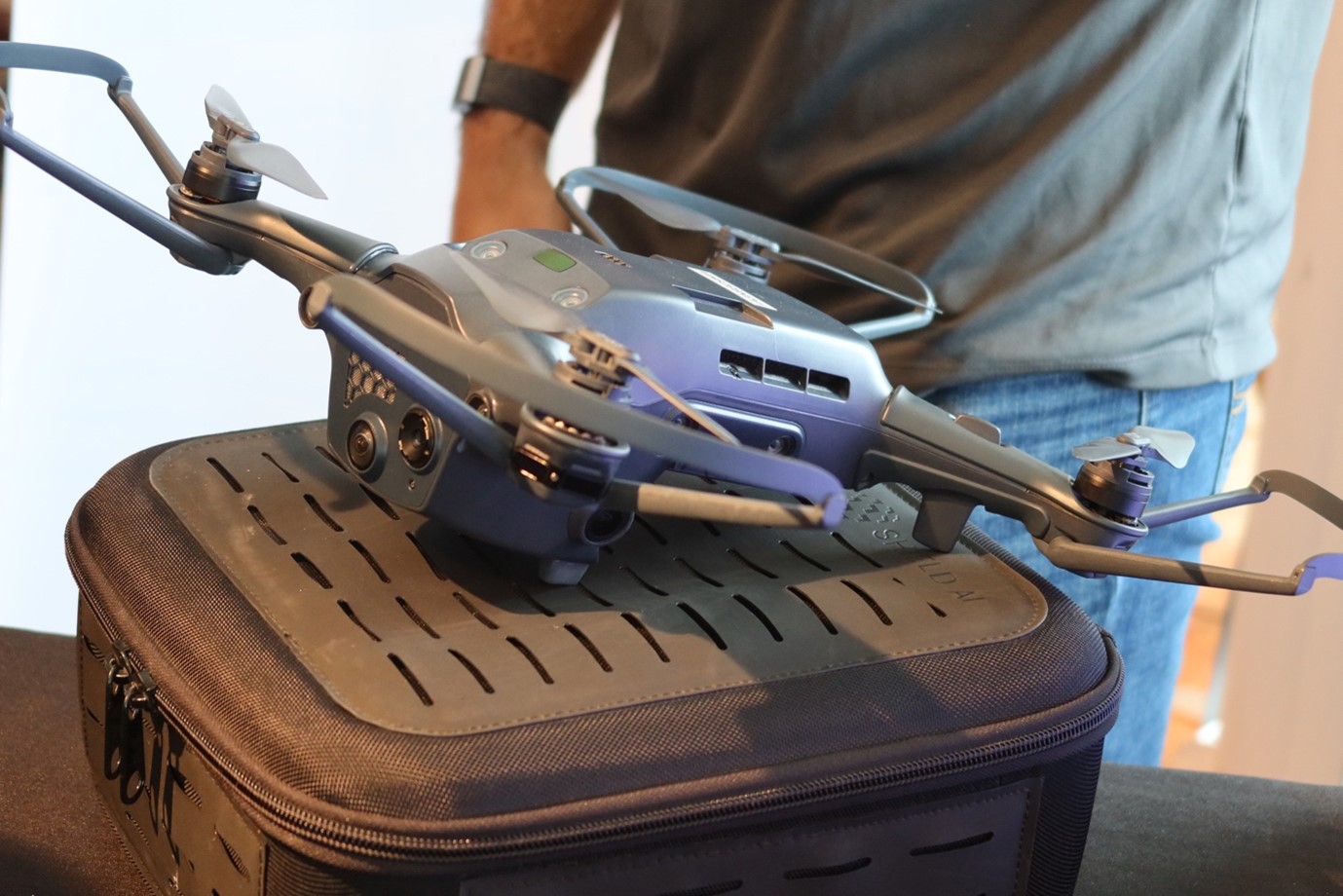
Credit: Tamir Eshel
Examples of drones designed for indoor use include the Nova 2 from US-based Shield AI. This drone employs state-of-the-art path planning and computer vision algorithms to autonomously navigate complex subterranean and multi-story buildings, for up to 16 minutes hovering time, at ranges of up to 150 m indoors. The full autonomy eliminates the need for RF or teleoperation links. As Nova 2 clears a building, detected threats are automatically added to a map, and users are alerted through vibration notifications. It uses ten sensors, five Intel RealSense stereo depth cameras, four IR cameras, and a long-wave infrared (LWIR) camera. Throughout the flight, the drone generates a 3D indoor multi-story and outdoor map of the building and its surroundings, highlighting door and window entry points and providing a common operating picture of the scene. It features top and bottom payload attachment points, high-speed data interfaces, power connections, and remote ejection capabilities to accommodate a variety of payloads. With a gross weight of 1.5 kg, Nova 2 can carry external payloads of 250 g in each of the top and bottom payload slots.
The Xtender is another drone optimised for indoor operation, from Israeli company Xtend.
Unlike the Nova 2, the Xtender relies on human guidance for indoor flight. The drone can support payloads weighing up to 150 g, and these can be radio relays or other loads required in complex scenarios. Its control system is provided with Xtend’s proprietary Mark & Fly XOS operating system, which supports multiple drones’ coordinated swarming. The company offers a single-hand controller which is linked to a wearable communications system and virtual reality goggles, enabling the user to guide the drones using simple hand gestures and monitor the environment through their cameras.
A third drone optimised for indoor operation is the Rooster, developed by the Israeli company Robotican. This unique design combines a quadrotor drone encased in a rugged, barrel-shaped frame that serves as a protector screen and a wheel, enabling the Rooster to both fly and roll on the ground. This hybrid configuration enables rapid, agile movement and extended endurance for indoor missions. The hybrid system uses rotors in flight and conserves power when rolling on the ground or stationary. By employing multiple Roosters, the vehicles can establish a self-healing mesh network to relay communications between the vehicles and maintain continuous data links to the controller. This enables more reliable operation in environments such as caves, rubble-strewn areas, or complex built-up environments. The Rooster weighs 1.45 kg and can carry payloads of up to 300 g. It can hover and fly for 12 minutes or roll for up to 45 minutes, but by combining movement and static observation, it can support a longer mission time out to around 90 minutes.
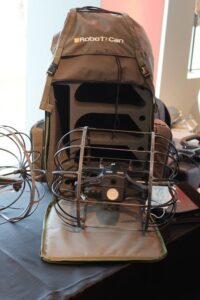
Credit: Tamir Eshel
As military technology advances, increasingly sophisticated personal unmanned assets are giving soldiers unprecedented new capabilities to carry employ. By leveraging the power of unmanned systems, AI, and advanced communication networks, these solutions are setting new standards for small-unit tactics and transforming the capabilities of special forces and dismounted infantry operations.
Tamir Eshel



